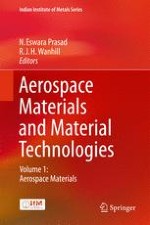2017 | Buch
Über dieses Buch
This book is a comprehensive compilation of chapters on materials (both established and evolving) and material technologies that are important for aerospace systems. It considers aerospace materials in three Parts. Part I covers Metallic Materials (Mg, Al, Al-Li, Ti, aero steels, Ni, intermetallics, bronzes and Nb alloys); Part II deals with Composites (GLARE, PMCs, CMCs and Carbon based CMCs); and Part III considers Special Materials. This compilation has ensured that no important aerospace material system is ignored. Emphasis is laid in each chapter on the underlying scientific principles as well as basic and fundamental mechanisms leading to processing, characterization, property evaluation and applications. This book will be useful to students, researchers and professionals working in the domain of aerospace materials.
Anzeige
